Foreword
Who are the great historical figures of Western Europe who define its identity? The answers of the secular world to this question are quite different from those of the Church. The Western secular world exalts secular figures like Charlemagne, Charles V, or Napoleon as “great Europeans”. But all three of these left Europe full of graves. Indeed, Charlemagne and Charles V were renowned for their massacres and, as for Napoleon, he declared that he would have had Christ hanged as a fanatic.[1]
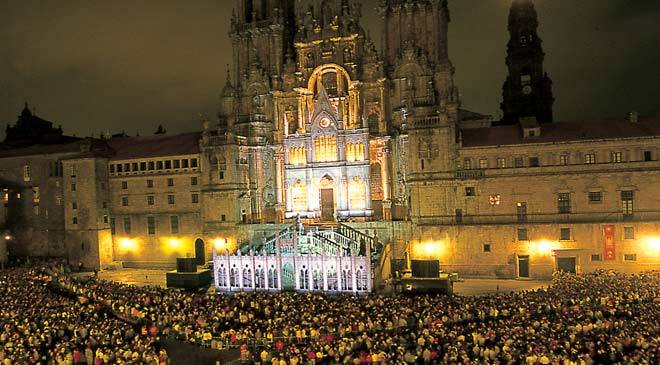 Crowd before an illuminated Santiago cathedral during the festivity of Saint James the Apostle. Santiago de Compostela, Photo: A Coruña,Turgalicia
Crowd before an illuminated Santiago cathedral during the festivity of Saint James the Apostle. Santiago de Compostela, Photo: A Coruña,Turgalicia The catalogues of the Church exclude all such tyrants, for the true identity of Western Europe is defined not by them, but by the thousands upon thousands of Western Saints. Here we have no space to mention the many amongst them who achieved only local fame, but we can at least mention some of the greatest, who obtained international honor.
The Apostles
First and foremost, the spiritual identity of Western Europe is closely linked to the Chiefs of the Holy Apostles, Peter († c.64) and Paul († c.65). Both came out of the East and were martyred in the West and the latter founded the first church in Western Europe, that in Rome. We also honor the memories of other Apostles and Apostolic figures, who are in other ways connected with the West. Among these is the Apostle James (†44), whose sacred relics have been honored in Compostella in Spanish Galicia for over a thousand years. Equally, we remember Apostolic men from the East, such as St. Ignatius of Antioch (c.107) and St. Justin Martyr (c.165), both martyred in Rome, and St. Irenaeus, († c.200), martyred in Pyons in France.
These Apostolic figures were to inspire countless others, who were to set out in later centuries as local Apostles, to enlighten the different regions and provinces of Western Europe. In the third and fourth centuries such saints established the Church in south-western Europe, in Italy, the Iberian Peninsula and Gaul, in the fifth and sixth centuries in the Celtic West, in the seventh century in England, and in the eighth to eleventh centuries in the Germanic north-west.
The Martyrs
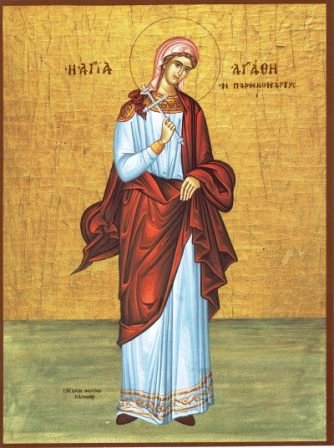 St. Agatha.
St. Agatha. Secondly, we cannot overlook the host of martyrs of the Imperial Capital and neighboring parts of the Empire. Some of them are well-known, like St. Sophia and her three children († 138), St. Cecilia († 2nd cent), St. Tatiana († 3rd century), St. Agatha († 3rd century), St. Laurence († 258), St. Valentine († c.270), St. Sebastian († 288), St. Lucy († 304), St. Anastasia († c.304), St. Pancras (†c.305), St. Januarius († c.305), St. Agnes († c.350), many others are less well known.
In other parts of the Empire there were others who also helped shape the spiritual identity of Europe. In Northwest Africa also there were many martyrs, for instance, St. Perpetua and St. Felicity († 203), and St. Cyprian of Carthage (# 258). In other parts of the West there were many other martyrs, still relatively little known outside their homelands, for example, St. Maurice of Agaunum in Switzerland († c.287), St. Eulalia of Merida († 304), St. Vincent of Spain († 304), St. Alban the Protomartyr of Britain († c.305), or St. Ursula in Germany (5th cent).
The Confessors
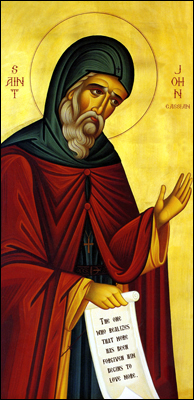 St. John Cassian.
St. John Cassian. Thirdly, after these martyrs who sowed the seeds of the Church, there came others to sow and then harvest. There came Church Fathers such as St. Hilary of Poitiers († c.368), St. Ambrose of Milan († 397), the Church writers Blessed Jerome of Stridon († 420) and Blessed Augustine of Hippo († 430), Fathers such as St. John Cassian (†435), St. Vincent of Perins (†450), St. Leo the Great (†461), and later St. Gregory the Great († 604) and St. Martin I († 655). And we should not fail to remember one who, though not a Church Father, is a great confessor who shone forth in Rome, St. Alexis († 5th century), the Man of God.
Similarly there are the great monastic founders and organizers of the Church, especially in heathen northwest Europe. For instance, in Gaul there were St. Martin of Tours († 397), who inspired St. Ninian († 432) in Pictish Scotland and St. Patrick in Ireland († c.461). In Italy, there was the great St. Benedict of Nursia († c.550). In Frankish Gaul there were St. Remigius (Remi) (†553), who baptized Clovis, St. Germanus of Paris (†561), St. Eloi († 660) and St. Peger († 679). In Iberia, there were St. Leander of Seville († c.601), St. Isidore of Seville († 636), St. lldefonsus (Alphonso) of Toledo († 666) and St. Julian of Toledo († 690). On the Germanic Marches there are also two great Apostles of the Lowlands, St. Lambert († c.705) and St. Hubert of Maastricht (+ 727).
Here we should not overlook the role played by women. The Orthodox West had not only founders, but also foundresses, in many ways it owed its conversion more to holy women and princesses than to princes. The first here is not a princess, but certainly a princess of the spirit, St. Monica († 387), who outshone her son, Bishop Augustine, by her holiness. Then there are St. Genevieve of Paris († c.500), St. Clotilde († 545), St. Radegund († 587) and St. Bathilde († 680). Before them in Ireland there had already been St. Brigid († c.525), and after them in England came St. Audrey († 679) and St. Hilda († 680). Their activities in the West mirror the activities of other holy foundresses further east much later, for example, the Bohemian St. Ludmila († c.925) in the Czech Lands and the Swedish St. Olga (Helga) († 969) in Kiev.
In the Isles the work of St. Patrick, mentioned above, was continued by the founder of monastic Ion a, St. Columba († 597). And his work in turn later inspired St. Aidan († 651) to found the monastic centre of Lindisfarne in the northeast of England. In the south of England there was the organizer St. Augustine of Canterbury († c.604). These all inspired kings and princes, for instance, St. Ethelbert († 616), St. Edwin († 633) and St. Oswald († 642). In the later seventh century the work of these figures was continued by the Greek St. Theodore of Canterbury († 690) and St. Cuthbert of Lindisfarne († 687). Their work was in its turn continued into the early eighth century by St. Guthlac of Crowland (†714) and St. Bede the Venerable († 735). The piety of the Isles had already overflowed into Western Europe with St. Columbanus († 615) and St. Gall († 630) in Switzerland. Their work was to be continued and organized in the eighth century by two English missionaries, St. Willibrord (Clement) in the Netherlands († 739) and the martyr St. Boniface (Winfrith) in the German Lands († 754).
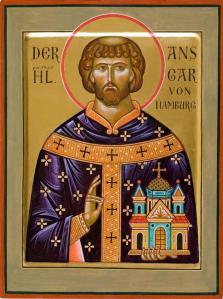 St. Anschar (Ansgar).
St. Anschar (Ansgar). There were also later martyrs, particularly in the ninth century. Firstly, there were those under the Muslims in Spain, especially Cordoba, such as those recorded by St. Eulogius († 859). Then, especially in England, there were the many martyrs under the Danish Vikings, such as St. Edmund († 869). They were followed by later builders and restorers of the Church, workers of the eleventh hour. These include those in the Scandinavian Lands, such as St. Anschar (Oscar) († 865) in Denmark, St. Olaf († 1029) in Norway and St. Sigfrid († c.1045) in Sweden. As regards the martyrs of England, they laid the foundations for the later restorers of monastic life, such as St. Ethelwold († 984), St. Dunstan († 988) and St. Oswald († 992).
Afterword
After a thousand-year-long apostasy and as, seemingly, we re-enter pagan times, there are those who consider that the Christian history of Western Europe is a thing of the past. This is a negative and fatalistic viewpoint. The spiritual identity of Western Europe is not beyond recovery. The final word in history has not yet been spoken. However, if Western Europe is to be recovered for Christ, this will only come to pass through the pure seeds of its Conversion, on the foundations laid by the above Great Europeans.
From Orthodox England, 2004
 Crowd before an illuminated Santiago cathedral during the festivity of Saint James the Apostle. Santiago de Compostela, Photo: A Coruña,Turgalicia
Crowd before an illuminated Santiago cathedral during the festivity of Saint James the Apostle. Santiago de Compostela, Photo: A Coruña,Turgalicia 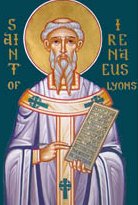
 St. Agatha.
St. Agatha.  St. John Cassian.
St. John Cassian. 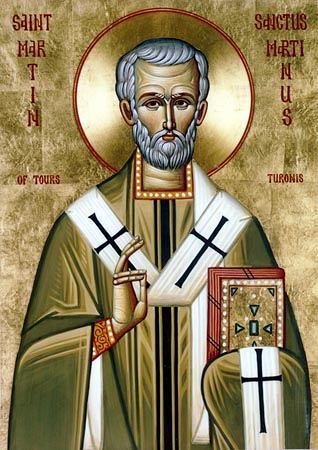
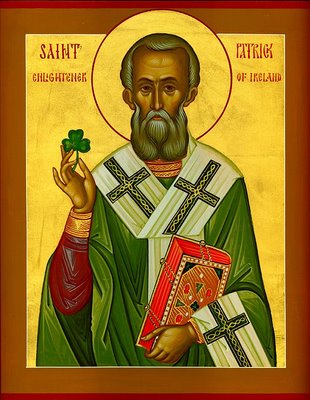
 St. Anschar (Ansgar).
St. Anschar (Ansgar). 
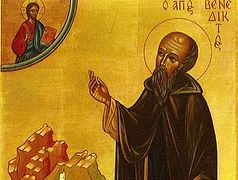
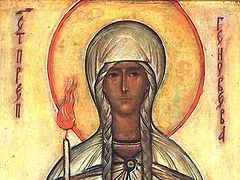

Probably, Fr Andrew means spiritual decay of the Roman Church, with her papal doctrines, heresies and inventions.
question: if the west decayed after 1054, how come its just begann to flourish: at least the romanesque and gothic christian culture. Never yet surpassed until now, an architecture of pure light.
Thanks and Regards,
Yes there is a spiritual crisis, but Charlemagne is a hero & founder of Europe, in those days all Kings killed many & he killed mainly pagans cuz he believed Christendom couldn't be safe if they didn't convert. Charles V christianized the whole of South America & his son christianized the Phillipines.
Meanwhile many rulers of Orthodox Eastern Europe collaborated & aided the Ottoman wars against European states.